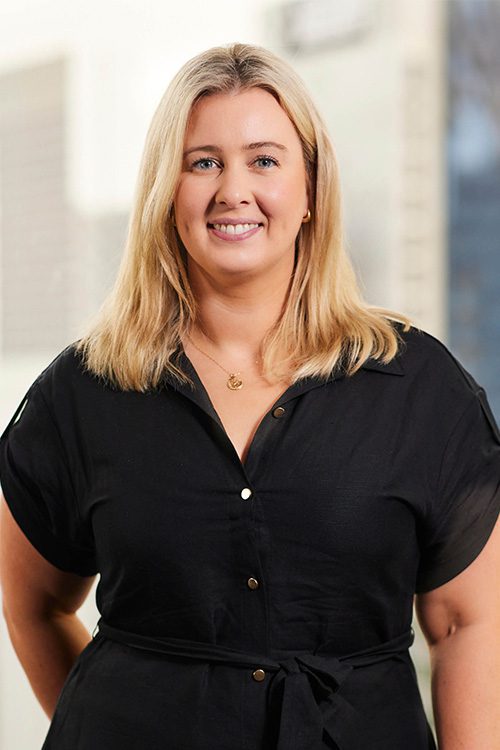Key considerations for SMSF trustees before 30 June 2016
In particular SMSF’s containing Limited Recourse Borrowing Arrangements (LRBAs) or collectables should be thoroughly reviewed prior to 30 June 2016.
With the ATO now having power to penalise Trustees who don’t comply with super legislation on an individual basis, we look at key considerations for SMSF trustees to ensure the ongoing compliance of their Fund.
The following articles provide an overview of the key issues of which you need to be aware.
Does your SMSF have a Limited Recourse Borrowing Arrangement?
The ATO has recently released practical compliance guidelines PCG2016/5 outlining what they consider to be “Safe Harbour” terms to structuring a related party LRBA in a SMSF consistent with a commercial, arm’s length dealing.
Under the guidelines, Trustees are allowed until 30 June 2016 to review and adjust any existing agreements. After this date, LRBA’s which meet the “Safe Harbour” conditions will be accepted by the Commissioner as an arm’s length commercial dealing.
LRBA’s failing the “Safe Harbour” conditions after 30 June 2016 may have non-arm’s length income (NALI) implications. This means income derived from the asset under the LRBA would be considered NALI and taxed at 47%, even where the SMSF is in pension stage.
While failing the “Safe Harbour” conditions will not automatically mean the SMSF has NALI, Trustees may find themselves required to provide evidence to the Commissioner that the loan has been maintained on a commercial basis.
The below table outlines the “Safe Harbour” conditions:
| Asset Type | Real Property | Listed Securities |
| Interest Rate | RBA Indicator Lending Rates for banks providing standard variable housing loans for investors. (2015-16 year = 5.75%) |
Same as Real Property + a margin of 2% |
| Fixed / Variable | Interest rate may be fixed or variable. | Interest rate may be fixed or variable. |
| Term of Loan | Total loan term cannot exceed 15 years (from the time of the original loan date) | Total loan term cannot exceed 7 years (from the time of the original loan date) |
| LVR | Maximum 70% LVR for both commercial & residential property. Total LVR of 70% if more than one loan. |
Maximum 50% LVR. Total LVR of 50% if more than one loan. |
| Security | A registered mortgage over the property. | A registered charge/mortgage or similar security (that provides security for loans for such assets). |
| Personal Guarantee | Not required | Not required |
| Nature & frequency of repayments | Each repayment is to be both principal and interest.
Repayments to be made monthly. |
Each repayment is to be both principal and interest.
Repayments to be made monthly. |
| Loan Agreement | A written and executed loan agreement is required. | A written and executed loan agreement is required. |
Information sourced from Practical Compliance Guidelines PCG 2016/5
To avoid the SMSF failing the “Safe Harbour” conditions and being liable for NALI tax at 47%, Trustees should consider the following options prior to 30 June 2016;
- the LRBA is adjusted for terms that are consistent with an arm’s length dealing, and the payments of principal and interest made are made under
- LRBA terms consistent with an arm’s length dealing
- the LRBA is re-financed through a commercial lender, or
- the LRBA is brought to an end.
The practical guidelines apply to real property and listed securities, however at this stage no guidance has been provided on LRBA’s used to invest in an unlisted company or unit trust. The only option for trustees who fall into this category is to benchmark their loan agreement on commercial terms, or pay out the LRBA.
Does your SMSF hold collectables?
Legislation impacting the conditions under which SMSFs can hold collectables as investments, comes into full effect from 1 July 2016.
Collectables held by an SMSF must be stored and insured in accordance with the legislation which has been five years in the making. Given the extended timeframe trustees had to make alternative arrangements, it expected that the ATO will not grant any leniency to trustees who have not complied with the new rules by the deadline.
The new rules for collectables are as follows:
- The item must not be leased to a related party of the Fund
- The item must not be stored in the private residence of a related party of the Fund
- A written record of the reasons for the storage decision must be made by trustees and kept for at least ten years
- The item must be insured in the name of the Fund within seven days of acquiring the item
- A related party of the Fund must not use the item
- If the collectable is sold or transferred to a related party, the realisation must be at market price determined by a qualified independent valuer.
Collectables which will not be stored and insured in accordance with the new rules should be disposed by 30 June 2016 to avoid incurring ATO penalties of up to $1,800 per breach.
Are you over 55 or drawing a pension?
Individuals can currently access their super in one of three ways;
- once they turn 65
- once they reach their preservation age and retire
- under the transition to retirement income stream (TRIS) rules, while continuing to work
While in pension phase, income and capital gains currently earned by a superannuation fund is tax free where the minimum pension has been withdrawn by the end of the financial year.
The minimum pension is based on a percentage of the opening balance of the pension account each year, and the minimum requirements increase in accordance with age as follows;
| Age | Minimum Withdrawal |
| Under 65 | 4% |
| 65-74 | 5% |
| 75-79 | 6% |
| 80-84 | 7% |
| 85-89 | 9% |
| 90-94 | 11% |
| Over 95 | 14% |
Those who are drawing a TRIS are also restricted to a 10% cap on withdrawals each year.
From 1 July 2017 a cap of $1.6m on the total balance an individual can transfer into the tax-free pension phase will be introduced. Subsequent earnings on these balances will be capitalised and included in the tax-exempt component of the fund.
Where an individual’s balance over $1.6m, they will be able to maintain the excess amount in an accumulation phase account (where earnings will be taxed at the concessional rate of 15%). Members who currently have a pension account with a balance above $1.6m will be required to revert the excess back to an accumulation account at 1 July 2017.
A tax on amounts that are transferred in excess of the $1.6m cap (including earnings on these excess transferred amounts) will be applied, similar to the tax treatment that applies to excess non-concessional contributions.
A TRIS is an income stream (pensions) paid to members who have reached their preservation age (currently 56) but who have not yet retired. From 1 July 2017 the tax exemption on income earned on assets supporting a TRIS will be removed. Additionally the rule that allows individuals to treat certain superannuation income stream payments as tax free lump sums will be removed.
What are the contribution caps?
There are two types of contributions a member is able to make to their fund;
- Concessional contributions, which include employer contributions and personal contributions for which a deduction would be claimed in the member’s income tax return.
- Non-concessional contributions, which are after tax contributions that may be made from personal savings, investments, inheritance or on behalf of a spouse.
Maximum contribution caps limit the amount of both concessional and non-concession contributions that can be made in any one year. The following table specifies the current caps in place.
| Concessional Contributions | ||
| Contribution Type | Age at 30 June | Annual Limit (Cap) |
| Until 30 June 2017 | Under 50 | $30,000 |
| 50 and over | $35,000 | |
| From 1 July 2017 | All ages | $25,000 |
| Non-Concessional Contributions | ||
| Contribution Type | Age at 30 June | Annual Limit (Cap) |
| From 1 July 2015 to 7:29pm 3 May 2016 | Under 65 | $180,000 (or $540,000 “bring forward cap” over three financial years) |
| 65 and over | $180,000 | |
| From 7:30pm 3 May 2016 | All ages | $500,000 lifetime limit starting from 1 July 2007 |
Excess contribution tax will be payable on any contributions over the caps for the 2016 financial year. Members should also be mindful that amounts exceeding their concessional contribution cap, will also be counted towards the non-concessional cap.
From 7:30pm on 3 May 2016 a lifetime non-concessional contributions limit of $500,000 was introduced in the Federal Budget. The limit will take into account all non-concessional contributions made from 1 July 2007.
Where a member has exceeded the $500,000 non-concessional cap prior to 3 May 2016 no penalties will apply, however they will be deemed to have utilized their full cap and any additional non-concessional contributions from this date would be subject to penalty tax. Accordingly, extreme care should be taken in respect of any future non-concessional contributions.
Currently a superannuation fund is able to accept contributions in respect of a member in accordance with the following requirements.
Under the age of 65
Contributions can be made for any person under the age of 65
Between the age of 65 and 75
The member must be gainfully employed for at least 40 hours in a period of not more than 30 consecutive days in the financial year
Over the age of 75
Only mandated employer contributions made under an industrial award or super guarantee legislation can be accepted
Other changes that will take effect from 1 July 2017 following the Budget announcement are as follows;
- The threshold for the additional 15% Division 293 tax on concessional contributions for ‘high income earners’ will be reduced to $250,000 from $300,000.
- All individuals regardless of their employment circumstances will be able to claim a tax deduction for personal concessional contributions. Currently an individual must have less than 10% their total income from employment sources in order to claim a deduction for personal contributions.
- Individuals with superannuation balances of less than $500,000 will be permitted to make additional concessional contributions, if they have not exhausted their concessional contribution limit in prior income years. The unused amounts will be carried forward on a rolling basis for a period of five consecutive years. Only unused amounts accrued from 1 July 2017 can be carried forward.
- Currently individuals aged 65 to 74 must meet a work test, of at least 40 hours of paid work in a 30 day period, in order to make contributions to their fund. From 1 July 2017, the work test will no longer be required to be satisfied prior to making contributions.










